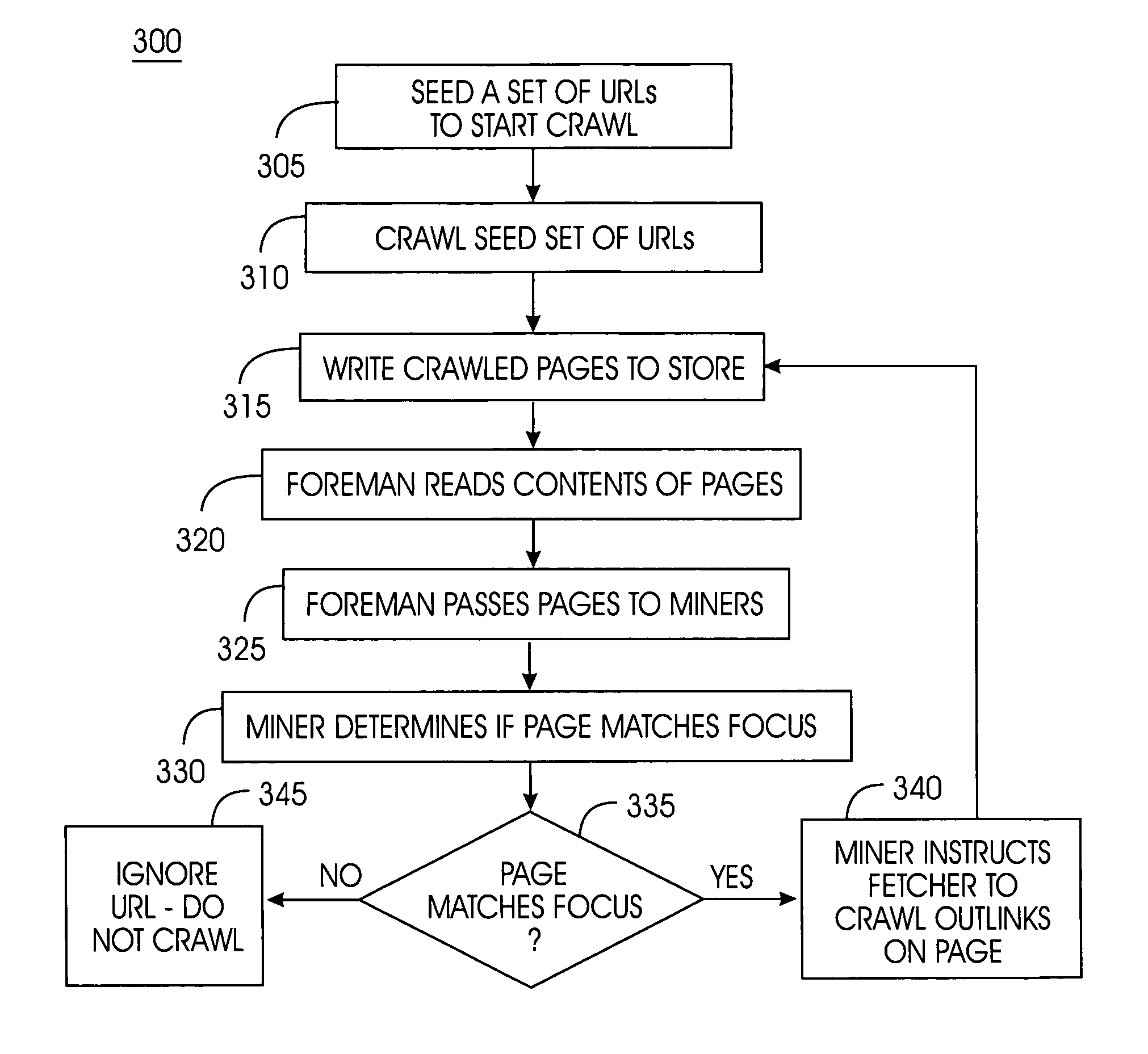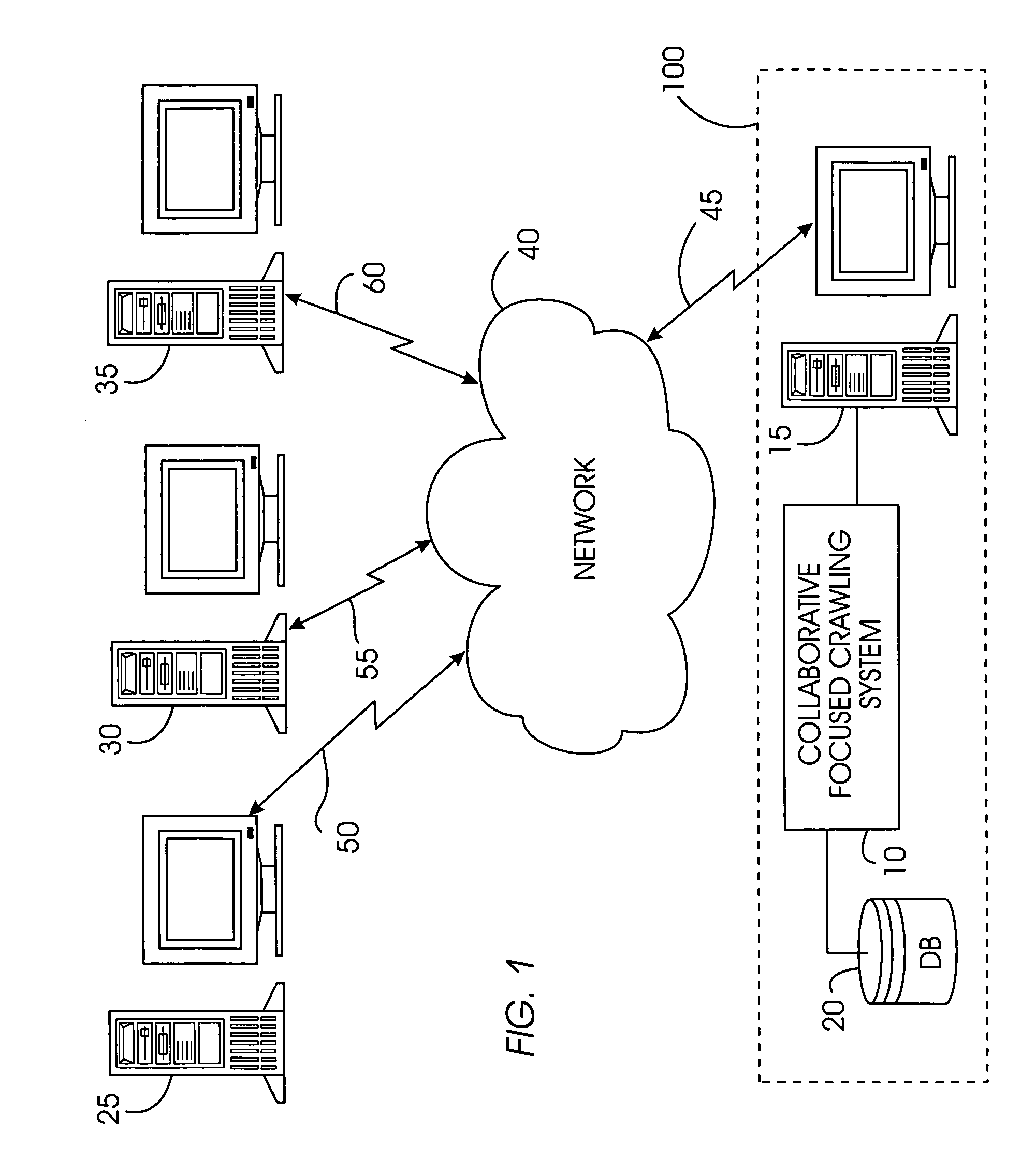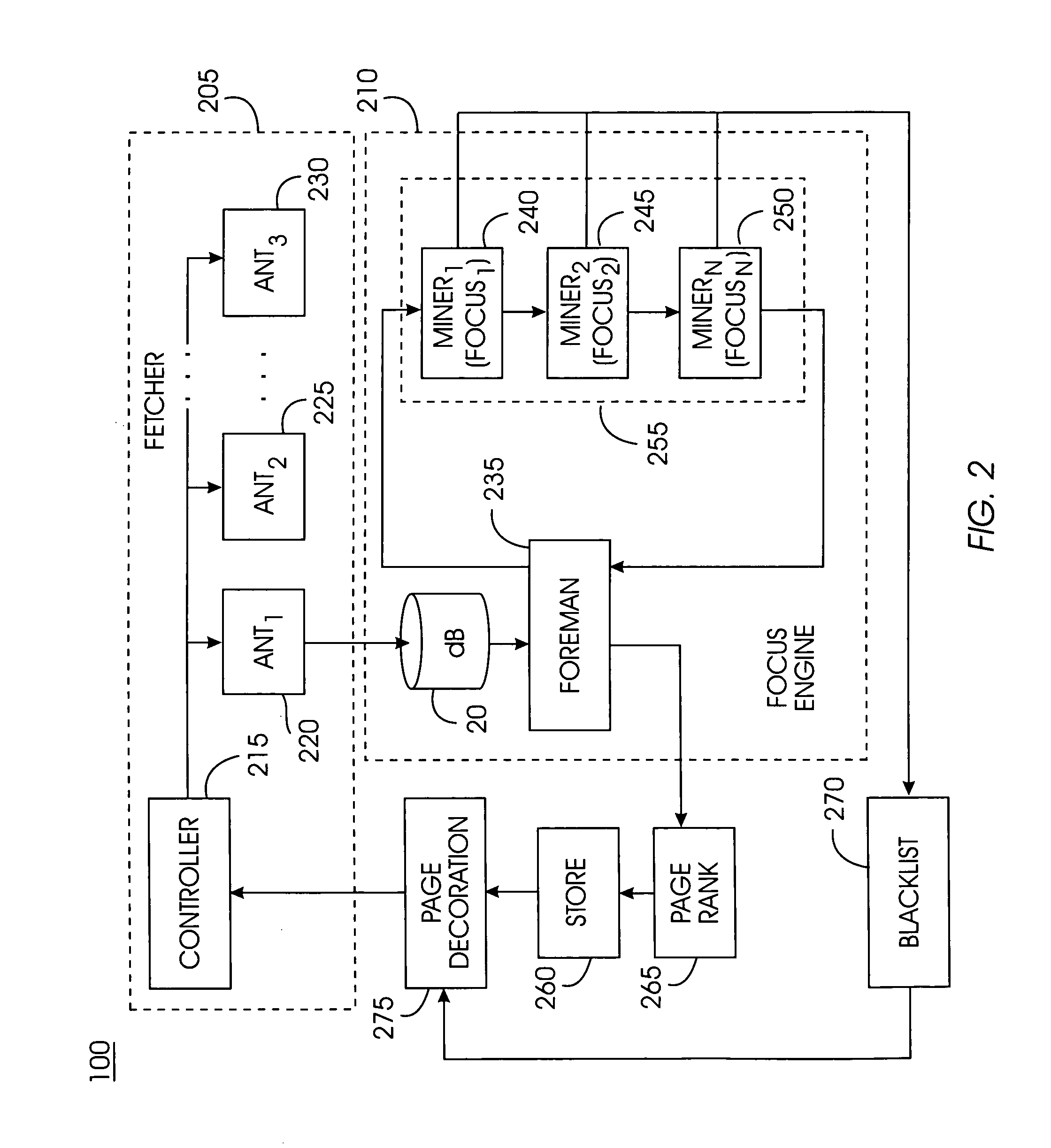System, Method, and service for collaborative focused crawling of documents on a network
a network and document technology, applied in the field of crawling a network, can solve the problems of high equipment cost, high bandwidth cost, and high cost of bandwidth for conventional crawlers
- Summary
- Abstract
- Description
- Claims
- Application Information
AI Technical Summary
Benefits of technology
Problems solved by technology
Method used
Image
Examples
Embodiment Construction
[0029] The following definitions and explanations provide background information pertaining to the technical field of the present invention, and are intended to facilitate the understanding of the present invention without limiting its scope:
[0030] Crawler: A program that automatically explores the World Wide Web by retrieving a document and recursively retrieving some or all the documents that are linked to it.
[0031] Focused Crawl: crawling only web documents that are of interest as defined by the crawler.
[0032] Internet: A collection of interconnected public and private computer networks that are linked together with routers by a set of standard protocols to form a global, distributed network.
[0033] URL (Uniform Resource Locator): A unique address that fully specifies the location of a content object on the Internet. The general format of a URL is protocol: / / server-address / path / filename.
[0034] Web document or page: A collection of data available on the World Wide Web and iden...
PUM
 Login to View More
Login to View More Abstract
Description
Claims
Application Information
 Login to View More
Login to View More - R&D
- Intellectual Property
- Life Sciences
- Materials
- Tech Scout
- Unparalleled Data Quality
- Higher Quality Content
- 60% Fewer Hallucinations
Browse by: Latest US Patents, China's latest patents, Technical Efficacy Thesaurus, Application Domain, Technology Topic, Popular Technical Reports.
© 2025 PatSnap. All rights reserved.Legal|Privacy policy|Modern Slavery Act Transparency Statement|Sitemap|About US| Contact US: help@patsnap.com



